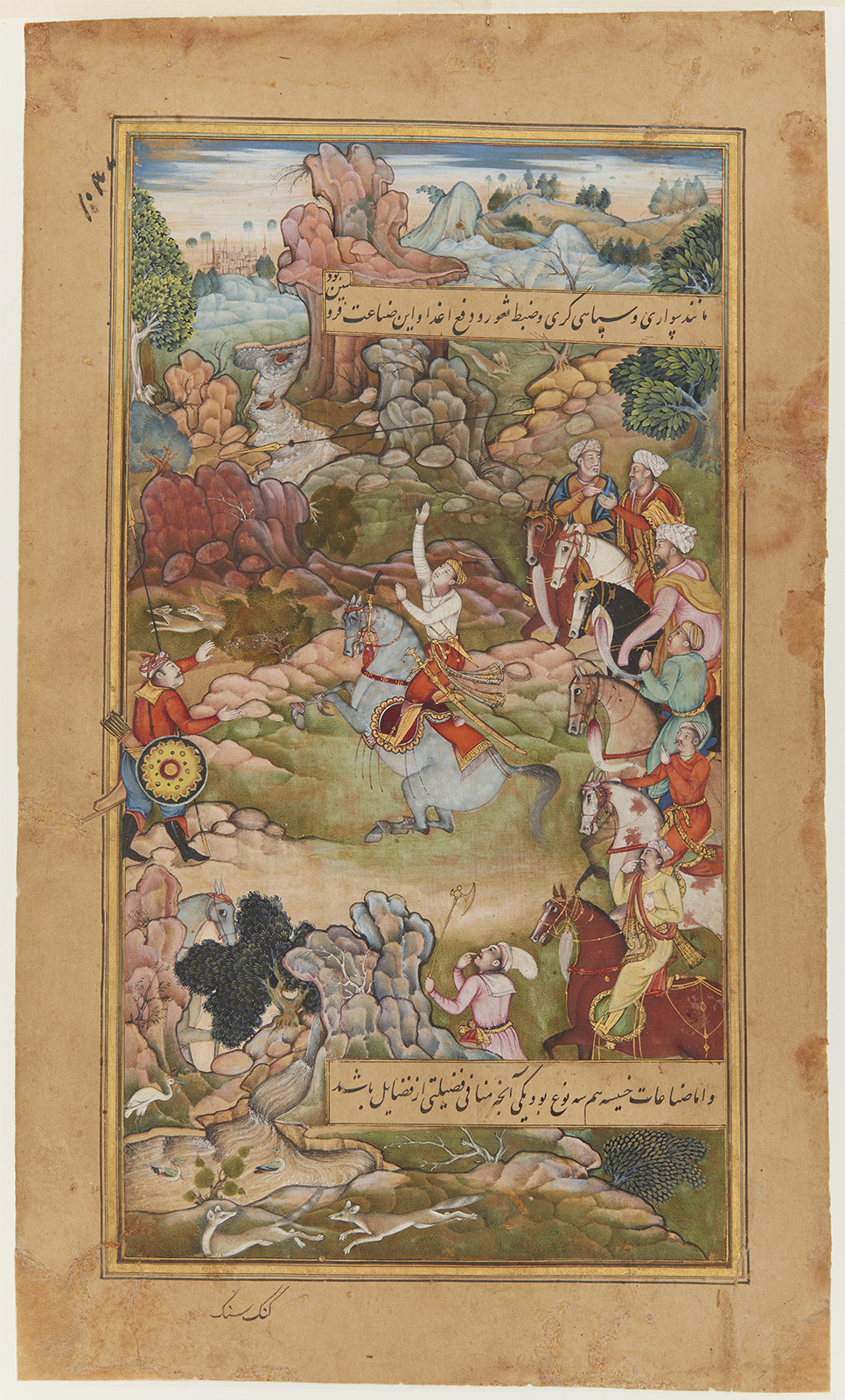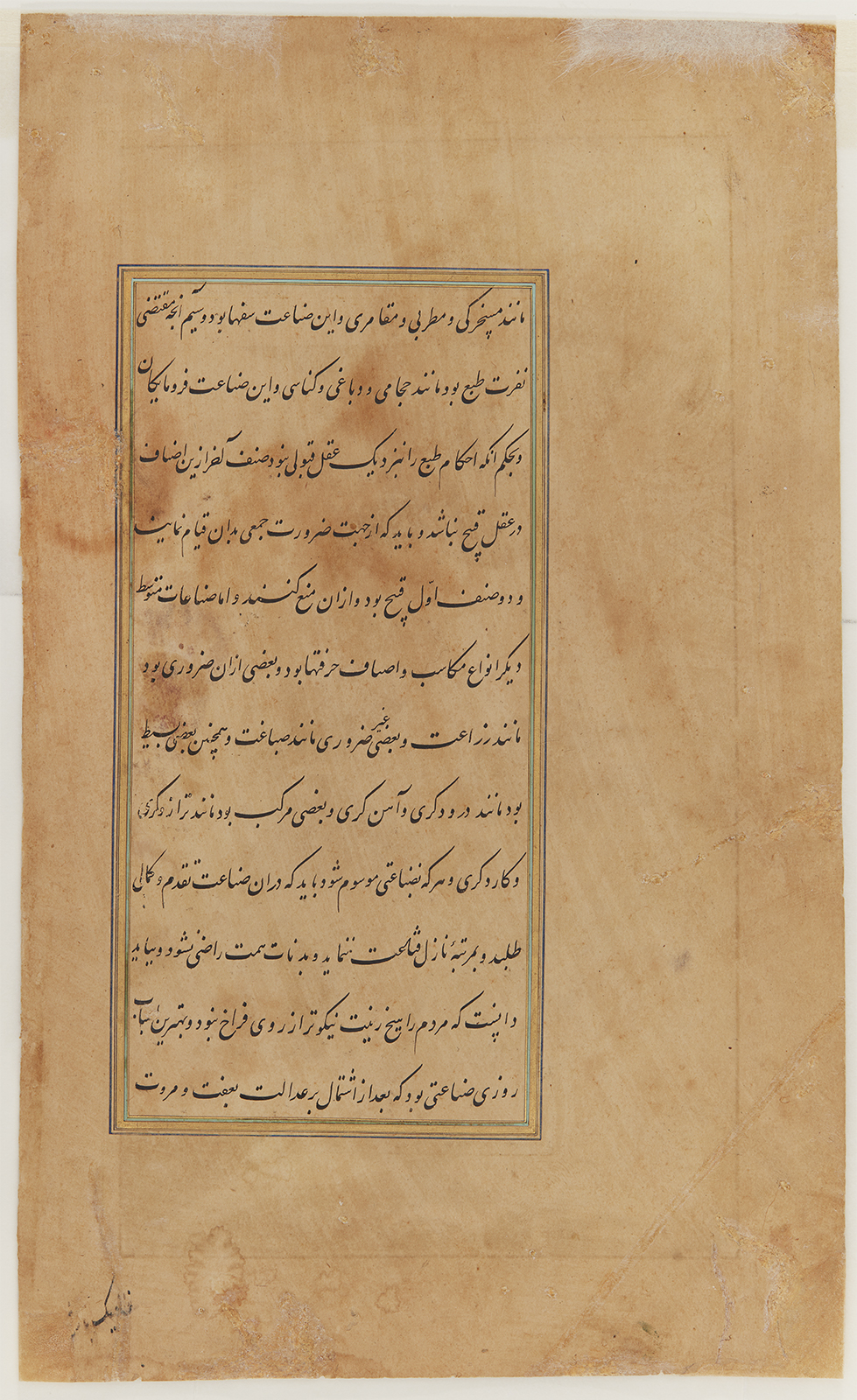Click on the image to zoom
The Art of Chivalry, Folio from a manuscript of the Ethics of Nasir (Akhlaq-i Nasiri)
- Accession Number:AKM288.7
- Creator:Artist (painter attributed): Kanak Sing
Author: Nasir al-Din Tusi, Persian, 1201 - 1274
Created for: Nasir al-Din `Abd al-Rahim - Place:Pakistan, Lahore
- Dimensions:23.9 cm × 14.2 cm
- Date:ca. 1590-1595
- Materials and Technique:opaque watercolour, gold, and ink on paper
This painting is the first to appear in the Second Discourse of Nasir al-Din Tusi’s text, in a section about skills one should aspire to attain. Some of these skills, such as writing or rhetoric, pertain to the mind, while others, including horsemanship and military command as illustrated here, pertain to the body.
The Ethics of Nasir describes the art of chivalry as a noble art that provides an income and requires strength, courage, superior equestrian abilities, military might, and the ability to protect and defend territory. Here (fol.138r), in the company of his ministers and other companions, a young Mughal prince astride a powerful horse attempts to catch a lance. In the lower part of the painting, a young man holds a tabarzin (axe) in his left hand while moving his right hand to his mouth. His index finger touches his lips, a sign of astonishment at this demonstration of equestrian skill.
A notation at the bottom of the page assigns the painting to Ganga Singh, whose name is found on other Mughal royal manuscripts from the mid 1580s until 1604. Ganga Singh was highly influenced by Farrukh Chela.
See AKM288 for an introduction to a manuscript of the Ethics of Nasir (Akhlaq-i Nasiri) and links to the other paintings within this manuscript.
— Filiz Çakır Phillip
References
Canby, Sheila. Princes, Poets & Paladins: Islamic and Indian Paintings from the Collection of Prince and Princess Sadruddin Aga Khan. London: Trustees of the British Museum, 1998. ISBN:9780714114835
Welch, Anthony, and Stuart Cary Welch. Arts of the Islamic Book: The Collection of Prince Sadruddin Aga Khan. London / Ithaca, NY: Cornell University Press, 1982. ISBN: 9780801498824
Note: This online resource is reviewed and updated on an ongoing basis. We are committed to improving this information and will revise and update knowledge about this object as it becomes available.




